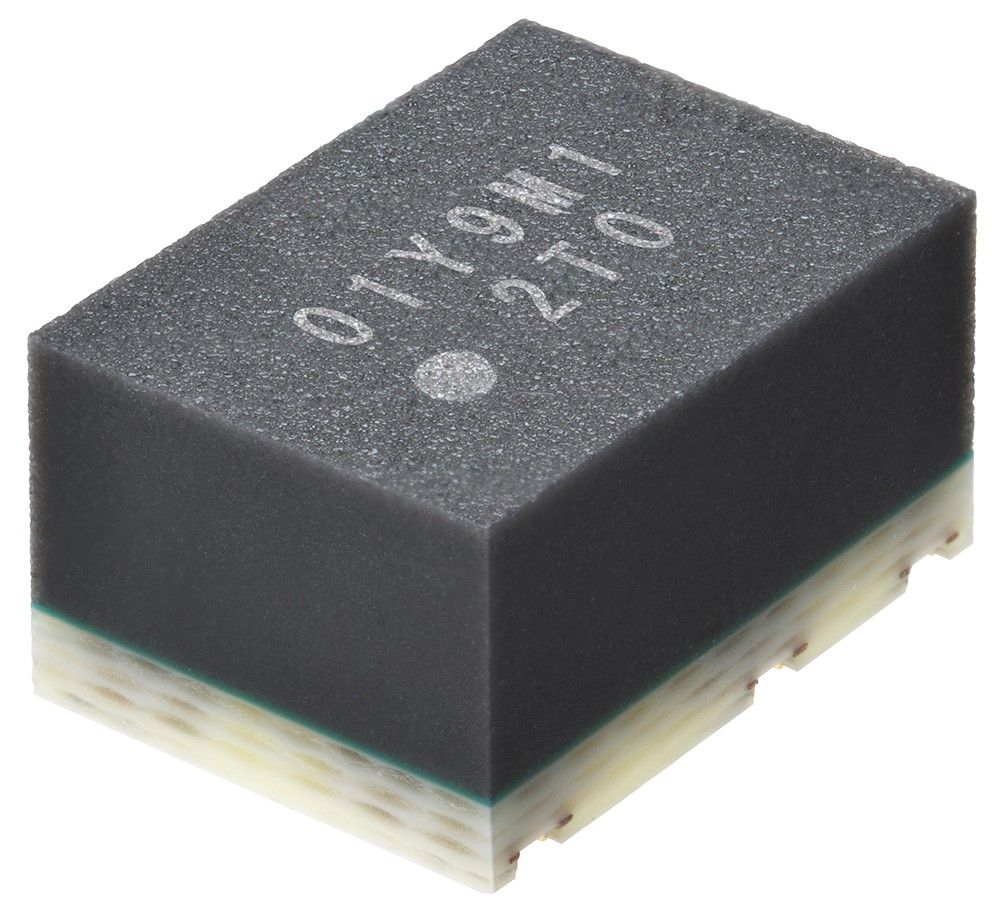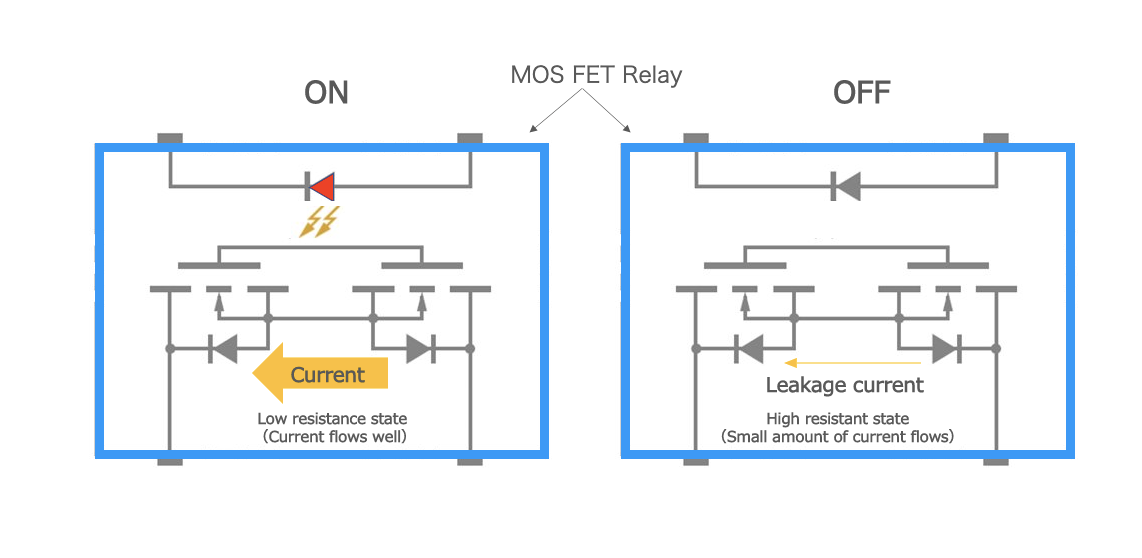On this page, we will interview Mr.Akutagawa, the developer of MOS FET relay module "G3VM-□□MT", to find out his thoughts on this development.
What kind of product is "G3VM-□□MT" (commonly called known as "T-module")?

Simply put, the "T-module" is a semiconductor relay module that has the properties of a mechanical relay (hereinafter referred to as "mech relay").
A semiconductor relay has a long life, but unlike a mech relay, it does not have complete ON or OFF.
It switches between a very high resistance state (OFF) and a low resistance state (ON), and there is a slight current flow in the high state. This is called "leakage current".
On the contrary, a mech relay has no leakage current when it is OFF, and is able to handle a high frequency range.
The T-module is a semiconductor module that combines these properties of a mechanical relay.

Diversified Product Division Business Management Division
Toshinobu Akutagawa
(The division was current as of time of development)
What are the benefits when the properties of mech relays and semiconductor relays are combined? Or, are there any problems?
It will solve the problems in the semiconductor inspection equipment industry that I am in charge of.
In the semiconductor inspection equipment industry, there is an urgent need to replace mech relays with semiconductor relays in terms of life and contact reliability (the reliability at the time of contact required for normal current conduction in contact relays). However, there are some difficult cases.
The problem is that the properties of a standard semiconductor relay do not enable it to handle micro currents and voltages or covering a wider frequency range.
As a result, reed relays (a type of mech relay) account for more than 50% of the relays even today.
What is the structure of the module "T" like?
This "T” is the key to solving the current problem.
In fact, the name of the T-module originates from the “T” shape formed by 3 semiconductor relays arranged in the module.
The "T"-shaped structure allows it to create the main flow line and the leakage current flow line. (Refer to the diagram below)

Explanatory diagram of leakage current

Explanatory diagram of T-type circuit
Where did the idea of T-module that integrates the characteristics of mech relays into semiconductor relays, come from?
I used to handle mech relays before I was involved in semiconductor relays.
I think I was able to come up with such an idea because I knew the benefits of mech relays.
Did you come across any difficulties during the development process?
The concept of the product was ready, but it could not be manufactured by OMRON RELAY & DEVICES Corporation alone, so I was quite worried about how to realize it.
For that reason, I consulted with the Sensor Division to shape the idea, and I started to clarify the specific structure. Although the structure was determined, it was manufactured for the first time, so we took our steps forward with various cooperation gained in design methods and evaluation standards.
What would be the outlook on our future product rollout?
Having acquired a patent as the world's first structure* that accommodates a T-shaped circuit in a package, we are able to develop the method to create the package from a module perspective, which is also a significant achievement.
Derivative products can now be easily developed by flexibly changing the inner structures and mounted elements, so I believe we managed to stand on the manufacturing start-line to swiftly commercialize new ideas. I would like to continue creating and commercializing new ideas so we can quickly contribute to solving our customers' problems.
Lastly, could you share with us what mentality you are actually holding in creating new products?
I joined this company because I like relays myself. The reason is that they are very versatile. I think the advantage of relays is that they are easy to use. Designers can use them at will and they can be utilized in various applications. This T-module reflected my wishes that customers can find new ways of applications so that their problems can be solved.
Relays are often considered to be old-fashioned, but I think this product still has potentials, so I would like to proceed with my new development.
*The world's first relay module adopting "T-shaped circuit structure" consisting of multiple MOS FET relays (based on our research in August 2021)